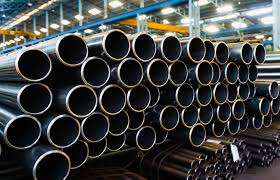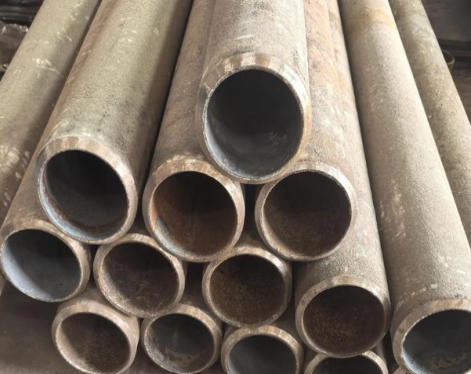Welding of welded tubes is a common step in steel structure buildings, and its quality directly affects the safety of the building structure. However, problems can arise during welding. So what are the causes and treatment methods of cracking of welded pipe welds? What should we pay attention to when welding?
1. What are the causes and treatment methods of cracking of welded tube welds?
(1) Caused by unqualified welding rod quality, it is recommended to choose regular welding rods. Although regular welding rods may be more expensive, you should not choose inferior welding rods just because they are cheap.
(2) The welding rod does not match the base material. It is recommended to consult the seller.
(3) The welding current is too large and cracks will occur after cooling. It is recommended to select an appropriate current and try to weld with a small current.
(4) Surface impurities are not removed before welding. Before welding, clean the welding surface to remove oil, oxides and other impurities to ensure welding quality. Chemical cleaning of steel pipes.
(5) Irregular welding processes and techniques: The welding process of welded tubes must be strictly standardized, and the detection of welded tubes must be strengthened, such as using eddy current testing, ultrasonic testing and other non-destructive testing methods to detect welding quality and ensure the availability of welded tubes.
There are three types of cracks in welded pipe welds. One is cracks, which are caused by high temperature during welding. The second is heating cracks. There are no cracks after welding, but cracks appear after heat treatment. The third is cold cracking, which is a crack produced during the welding process.

2. What should we pay attention to when welding welded tubes?
(1) Welding operators and cooperating personnel must wear labor protection equipment in accordance with regulations. Safety measures must be taken to prevent electric shock, fire and other accidents.
(2) The butt welding machine should be placed indoors and should have reliable grounding or zero connection. The length of the welding wire should not be greater than 30m. When the wire needs to be lengthened, the cross section of the wire should be increased accordingly. When multiple butt welding machines are installed in parallel, the distance between them should not be less than 3m, they should be connected to the power grid of different phases, and they should have their own knife switches.
(3) Oil, wood, oxygen bottles, acetylene generators and other flammable and explosive items must not be stacked within 10m of the welding site.
(4) Before operation, check and confirm that the pressure mechanism of the butt welding machine is flexible, the clamps are firm, and there are no leaks in the pneumatic and hydraulic systems. Welding can only be carried out after everything is normal.
(5) Before welding, the secondary voltage should be adjusted according to the cross-section of the steel pipe to be welded, and steel pipes exceeding the diameter specified by the butt welding machine must not be welded.
(6) The contact points and electrodes of the circuit breaker should be polished regularly, and all connecting bolts of the secondary circuit should be tightened regularly. The cooling water temperature should not exceed 40°C, and the drainage volume should be adjusted according to the temperature.
(7) When welding long steel pipes, brackets should be installed to cooperate with the operators carrying the steel pipes, and care should be taken to prevent spark burns during welding.
(8) Flame-retardant baffles should be installed in the flash area, and other personnel are not allowed to enter during welding.
(9) When welding in winter, the indoor temperature should not be lower than 8oC. After operation, the cooling water in the machine should be drained.
1. What are the causes and treatment methods of cracking of welded tube welds?
(1) Caused by unqualified welding rod quality, it is recommended to choose regular welding rods. Although regular welding rods may be more expensive, you should not choose inferior welding rods just because they are cheap.
(2) The welding rod does not match the base material. It is recommended to consult the seller.
(3) The welding current is too large and cracks will occur after cooling. It is recommended to select an appropriate current and try to weld with a small current.
(4) Surface impurities are not removed before welding. Before welding, clean the welding surface to remove oil, oxides and other impurities to ensure welding quality. Chemical cleaning of steel pipes.
(5) Irregular welding processes and techniques: The welding process of welded tubes must be strictly standardized, and the detection of welded tubes must be strengthened, such as using eddy current testing, ultrasonic testing and other non-destructive testing methods to detect welding quality and ensure the availability of welded tubes.
There are three types of cracks in welded pipe welds. One is cracks, which are caused by high temperature during welding. The second is heating cracks. There are no cracks after welding, but cracks appear after heat treatment. The third is cold cracking, which is a crack produced during the welding process.

2. What should we pay attention to when welding welded tubes?
(1) Welding operators and cooperating personnel must wear labor protection equipment in accordance with regulations. Safety measures must be taken to prevent electric shock, fire and other accidents.
(2) The butt welding machine should be placed indoors and should have reliable grounding or zero connection. The length of the welding wire should not be greater than 30m. When the wire needs to be lengthened, the cross section of the wire should be increased accordingly. When multiple butt welding machines are installed in parallel, the distance between them should not be less than 3m, they should be connected to the power grid of different phases, and they should have their own knife switches.
(3) Oil, wood, oxygen bottles, acetylene generators and other flammable and explosive items must not be stacked within 10m of the welding site.
(4) Before operation, check and confirm that the pressure mechanism of the butt welding machine is flexible, the clamps are firm, and there are no leaks in the pneumatic and hydraulic systems. Welding can only be carried out after everything is normal.
(5) Before welding, the secondary voltage should be adjusted according to the cross-section of the steel pipe to be welded, and steel pipes exceeding the diameter specified by the butt welding machine must not be welded.
(6) The contact points and electrodes of the circuit breaker should be polished regularly, and all connecting bolts of the secondary circuit should be tightened regularly. The cooling water temperature should not exceed 40°C, and the drainage volume should be adjusted according to the temperature.
(7) When welding long steel pipes, brackets should be installed to cooperate with the operators carrying the steel pipes, and care should be taken to prevent spark burns during welding.
(8) Flame-retardant baffles should be installed in the flash area, and other personnel are not allowed to enter during welding.
(9) When welding in winter, the indoor temperature should not be lower than 8oC. After operation, the cooling water in the machine should be drained.









